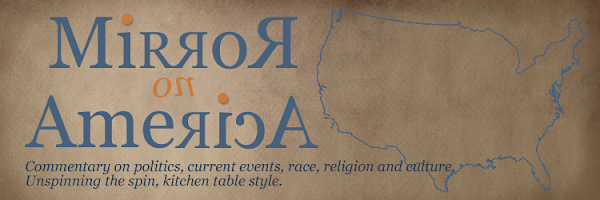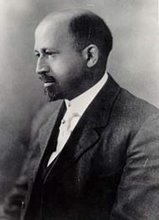E.D. Nixon

Edgar Daniel Nixon (July 12, 1899 – February 25, 1987) was an American civil rights leader and union organizer who played a crucial role in organizing the famous Montgomery Bus Boycott in Montgomery, Alabama. Nixon also led the Montgomery branch of the Brotherhood of Sleeping Car Porters union, known as the Pullman Porters Union. Nixon also served as president of the local chapter of the National Association for the Advancement of Colored People (NAACP), the Montgomery Welfare League, and the Montgomery Voters League.
In the early 1950s, Nixon and Jo Ann Robinson, president of the Women's Political Council decided to mount a court challenge to the discriminatory seating practices on Montgomery's municipal buses along with a boycott of the bus company. A Montgomery ordinance reserved the front seats on these buses for white passengers only, forcing African-American riders to sit in the back. Before the activists could mount the court challenge, they needed someone to voluntarily break this bus seating law and be arrested for it. Nixon carefully searched for a suitable plaintiff. He rejected one candidate because he didn't believe she had the fortitude to see the case through. Nixon rejected a second candidate because she was an unwed mother and a third candidate because her father was an alcoholic.
The final choice was Rosa Parks, the elected secretary of the Montgomery NAACP. On December 1, 1955, Parks entered a Montgomery bus, refused to give up her seat for a white passenger, and was then arrested. After being called about Parks' arrest, Nixon went to bail her out of jail. He arranged for Parks' friend Clifford Durr, a sympathetic white lawyer, to represent her. After years working with Parks, Nixon was certain that she was the ideal candidate to challenge the discriminatory seating policy. Even so, Nixon had to persuade Parks to lead the fight. After consulting with her mother and husband, Parks accepted the challenge.
Vernon Johns

Vernon Johns (April 22, 1892 – June 11, 1965) was an American minister and civil rights leader who was active in the struggle for civil rights for African Americans from the 1920s.
He is considered the father of the American Civil Rights Movement, having laid the foundation on which Martin Luther King, Jr. and others would build. He was Dr. King's predecessor as pastor at Dexter Avenue Baptist Church in Montgomery, Alabama from 1947 to 1952, and a mentor of Ralph Abernathy, Wyatt Walker, and many others in the Southern Christian Leadership Conference.
Johns was born in Darlington Heights, Prince Edward County, Virginia. He died of a heart attack in Washington, D.C. at age 73. David Anderson Elementary School in Petersburg, VA was renamed 'Vernon Johns Middle School' several years ago. In 2009 it will become the junior high school for the city school system.
THE LIFE AND TIMES OF THE PROPHET VERNON JOHNS: FATHER OF THE CIVIL RIGHTS MOVEMENT
Johns' Famous Sermon: Transfigured Moments
Daisy Bates

Daisy Lee Gatson Bates (November 11, 1914 in Huttig, Arkansas – November 4, 1999 in Little Rock, Arkansas) was an American civil rights leader, journalist, publisher, and author who played a leading role in the Little Rock integration crisis of 1957.
Bates' mother was murdered while resisting three local white men who were attempting to rape her. Her father left the family shortly after her mother's death and she was raised by friends of the family, Orle and Susie Smith.
At the age of 15, Daisy became the object of an older man’s attention. L.C. Bates, an insurance salesman who had also worked on newspapers in the South and West. L.C. dated her for several years, and they married in 1942, living in Little Rock. The Bates decided to act on a dream of theirs, to run their own newspaper, leasing a printing plant that belonged to a church publication and inaugurating the Arkansas State Press. The first issue appeared on May 9, 1941. The paper became an avid voice for civil rights even before a nationally recognized movement had emerged.
In 1952, Daisy Bates was elected president of the Arkansas State Conference of NAACP branches.
Bates and her husband L.C. Bates were important figures in the Little Rock Integration Crisis in 1957. The Bates published a local black newspaper, the Arkansas State Press, which publicized violations of the Supreme Court's desegregation rulings.
Bates guided and advised the nine students, known as the Little Rock Nine, when they attempted to enroll at Little Rock Central High School, a previously all white school, in 1957. The students' attempts to enroll provoked a confrontation with Arkansas Governor Orval Faubus, who called out the National Guard to prevent the students from enrolling. White mobs met at the school, threatening to kill the black students; these mobs harassed not only activists but also northern journalists who came to cover the story. Bates was a pivotal figure in that seminal moment of the civil rights movement. As a publisher and journalist, she was also a witness and advocate on a larger scale.
The city council instructed the Little Rock police chief to arrest Bates and other NAACP officials; she and the local branch president surrendered voluntarily. They were charged with failing to provide information about members for the public record, in violation of a city ordinance. Though Bates was charged a fine by the judge, NAACP lawyers appealed and eventually won a reversal in the United States Supreme Court.
President Dwight D. Eisenhower intervened by federalizing the Arkansas National Guard and dispatching the 101st Airborne Division to Little Rock to ensure that the court orders were enforced.
Their involvement in the Little Rock Crisis resulted in the loss of much advertising revenue to their newspaper and it was forced to close in 1959. In 1960, Daisy Bates moved to New York City and wrote her memoir, The Long Shadow of Little Rock, which won a 1988 National Book Award.
Media:
Freedom is Never Free; a Biographical Portrait of E. D. Nixon, Sr. by Lewis V. Baldwin (Author), Aprille V. Woodson (Author)
The Vernon Johns Story (True Stories Collection TV Movie) (1994)-DVD
Starring: James Earl Jones, Garland Bunting
The Long Shadow of Little Rock: A Memoir by Daisy Bates (Author), Eleanor Roosevelt (Foreword), Clayborne Carson (Afterword)
The Power of One: Daisy Bates and the Little Rock Nine by Judith Bloom Fradin and Dennis Brindell Fradin
Daisy Bates: Civil Rights Crusader from Arkansas (Margaret Walker Alexander Series in African American Studies) by Grif Stockley















1 comment:
Vernon Johns was something else.
I will never get tired of watching Road to Freedom... the Vernon Johns Story. Classic!
Post a Comment